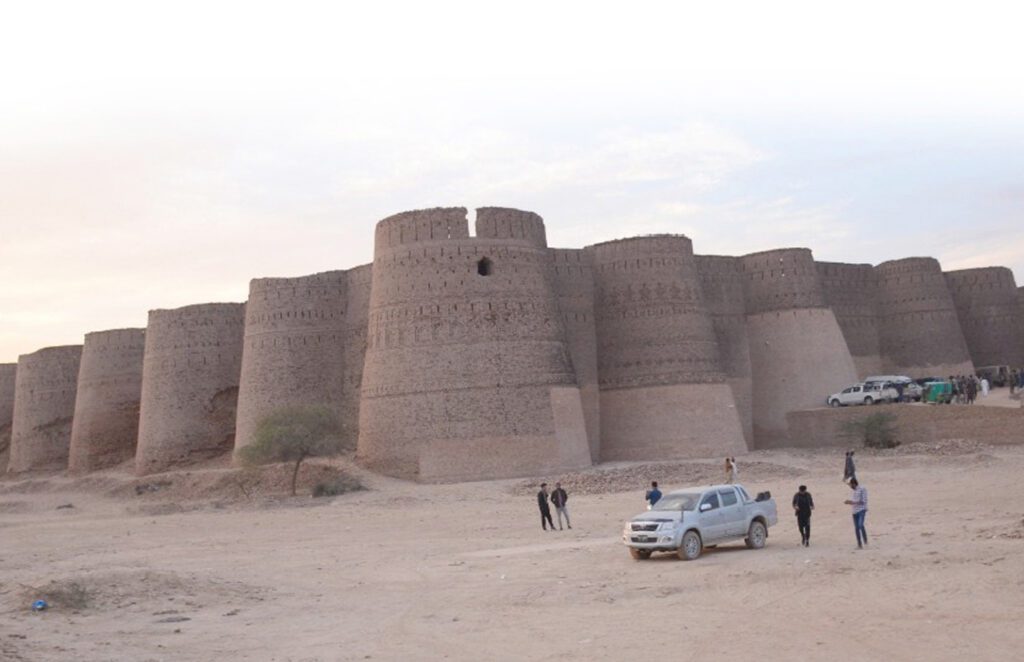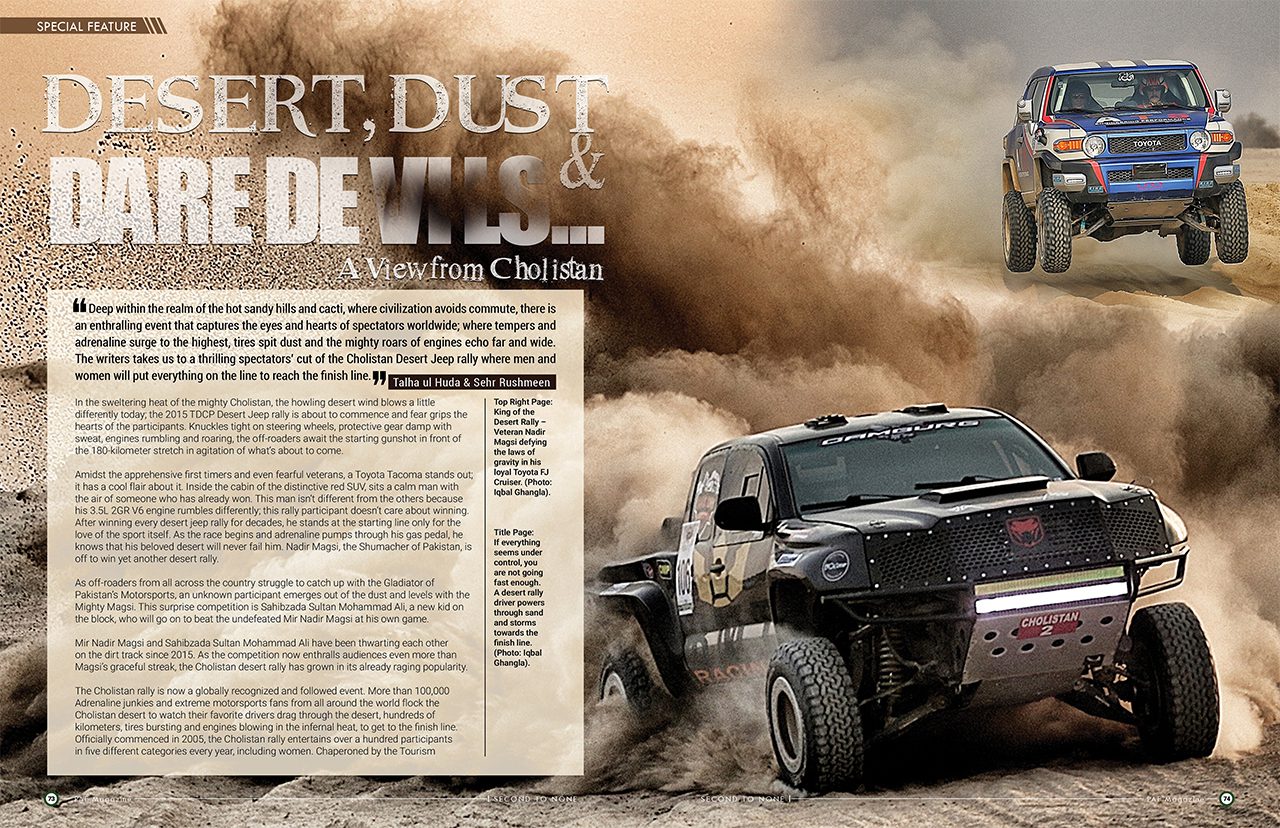Deep within the realm of the hot sandy hills and cacti, where civilization avoids commute, there is an enthralling event that captures the eyes and hearts of spectators worldwide; where tempers and adrenaline surge to the highest, tires spit dust and the mighty roars of engines echo far and wide. The writers takes us to a thrilling spectators’ cut of the Cholistan Desert Jeep rally where men and women will put everything on the line to reach the finish line.
In the sweltering heat of the mighty Cholistan, the howling desert wind blows a little differently today; the 2015 TDCP Desert Jeep rally is about to commence and fear grips the hearts of the participants. Knuckles tight on steering wheels, protective gear damp with sweat, engines rumbling and roaring, the off-roaders await the starting gunshot in front of the 180-kilometer stretch in agitation of what’s about to come.
Amidst the apprehensive first timers and even fearful veterans, a Toyota Tacoma stands out; it has a cool flair about it. Inside the cabin of the distinctive red SUV, sits a calm man with the air of someone who has already won. This man isn’t different from the others because his 3.5L 2GR V6 engine rumbles differently; this rally participant doesn’t care about winning. After winning every desert jeep rally for decades, he stands at the starting line only for the love of the sport itself. As the race begins and adrenaline pumps through his gas pedal, he knows that his beloved desert will never fail him. Nadir Magsi, the Shumacher of Pakistan, is off to win yet another desert rally.
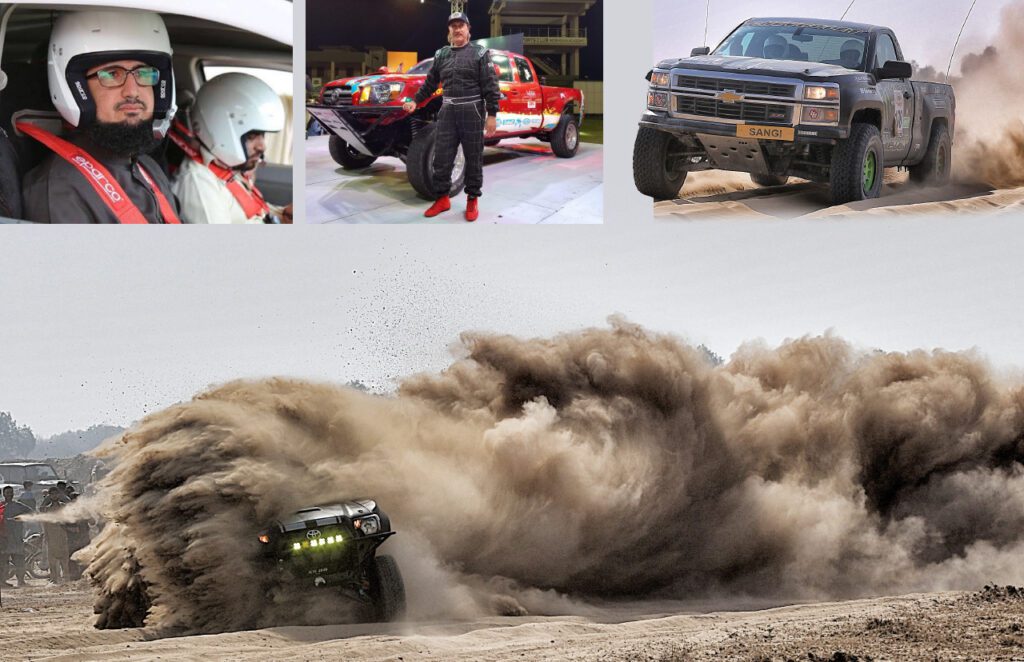
As off-roaders from all across the country struggle to catch up with the Gladiator of Pakistan’s Motorsports, an unknown participant emerges out of the dust and levels with the Mighty Magsi. This surprise competition is Sahibzada Sultan Mohammad Ali, a new kid on the block, who will go on to beat the undefeated Mir Nadir Magsi at his own game.
Mir Nadir Magsi and Sahibzada Sultan Mohammad Ali have been thwarting each other on the dirt track since 2015. As the competition now enthralls audiences even more than Magsi’s graceful streak, the Cholistan desert rally has grown in its already raging popularity.
The Cholistan rally is now a globally recognized and followed event. More than 100,000 Adrenaline junkies and extreme motorsports fans from all around the world flock the Cholistan desert to watch their favorite drivers drag through the desert, hundreds of kilometers, tires bursting and engines blowing in the infernal heat, to get to the finish line. Officially commenced in 2005, the Cholistan rally entertains over a hundred participants in five different categories every year, including women. Chaperoned by the Tourism Department of the Punjab Government, the rally stretches over districts of Rahimyar Khan, Bahawalnagar and Bahawalpur. The route was extended to 500 kms in the Cholistan desert and now also includes major forts of the area like Dingarh, Marrot, Khan Garh, Bhijnot, Moujgarh and Jamgarh Fort.
Cholistan Jeep rally has transcended into a cultural festival of sorts, with Motorsport fans and tourists camping out in tents and caravans for the events. Cholistan transforms into an enthralling battleground during the day and a festival of lights, laughter and music into the night. Traditional Sindhi dances, musical performances and scrumptious food serenades the audiences as they celebrate coming together for a shared love of motorsports alongside their beloved drivers.
The Rally experience isn’t fulfilling without the history that surrounds the desert. The forty Bastions of the grand Derawar fort are visible on the horizon of the Cholistan. One of the largest fortresses in Pakistan, the Derawar fort is a unique insight into the history of Southern Punjab and royalty residing in the desert. Near the jeep rally camp, historic marvels like Dingarh, Moujgarh and Marot Forts also astound tourists. Standing in the midst of the desert, foundations and walls eaten away by the sands of time, the ancient forts represent the once-majestic history of the Cholistan. Tourists attending the TDCP rally visit these establishments in the leisure hours, breathe in the history that they stand upon and try to imagine the forts in their prime.
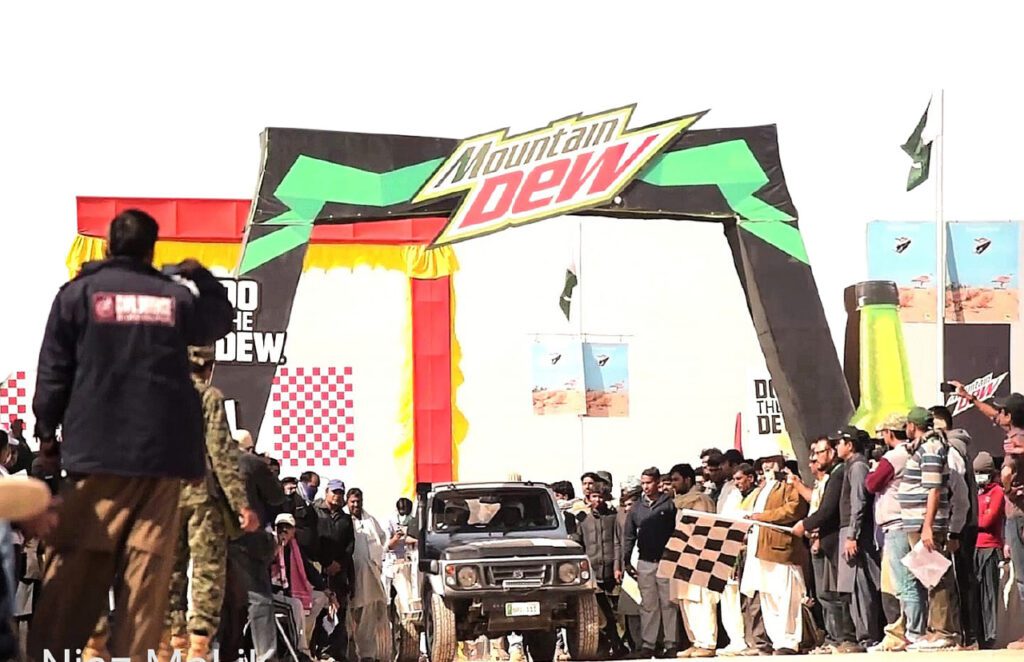
While players of any other dangerous sport might draw daggers at each other, Pakistan’s Jeep rally racers are all friends, off the track. The air of the fierce competition on the rally and warmth of celebration afterwards, showcases true sportsmanship.
In 50 degrees Celcius, gunning at 150Km/h; the eyes of a Jeep rally driver and navigator see the world differently. To gain perspective from inside the daredevils’ cabin, we spoke to different participants of the TDCP Jeep rally.
Motorsport enthusiasts associate the sport itself with Mir Nadir Magsi, the pioneer of Jeep Desert rally racing in Pakistan, in the form that it is today. From organizing rallies himself, motivating and mentoring local players to join in, to attracting the interest of international media organizations, there is little to argue with the fact that the sport could not have existed in Pakistan without him. He has won so many rallies that he has probably lost count by now. He is at the pinnacle of the sport where winning or losing doesn’t mean anything anymore. He has taken up for himself a much bigger challenge- mentoring and promoting the sport at global levels, a task only he can achieve.
Highlighting the importance of promoting the sports at all levels, Nadir Magsi said, “We’ve made a lot of efforts to establish Desert Rally as a serious sport with several governments and have made headway. But of course, it needs more attention from the public and private sectors”. He further added, “Motor Sports has risen from humble beginnings. The first few years were extremely difficult and disappointing. Slowly, the attention of the media turned our way. It made people curious”.
The veteran rally driver said that he wishes to cement a better future of the sport “I could retire in a few years, but I want to raise and train a generation that can keep the sport alive and thriving”.
Mir Nadir Magsi, who out of sheer passion made a Go-kart out of a generator engine and Triumph gearbox as a child, has continued to dominate the dirt tracks and conquer the desert, year after year, track after track. In the early 2000s, when Nadir Magsi picked up his family’s hereditary interest in motorsports, he aimed at his ancestral land Jhal Magsi becoming a pivot for Jeep rallies. Rest assured, the Jhal Magsi Jeep rally is one of the most anticipated Desert jeep rallies in South Asia.
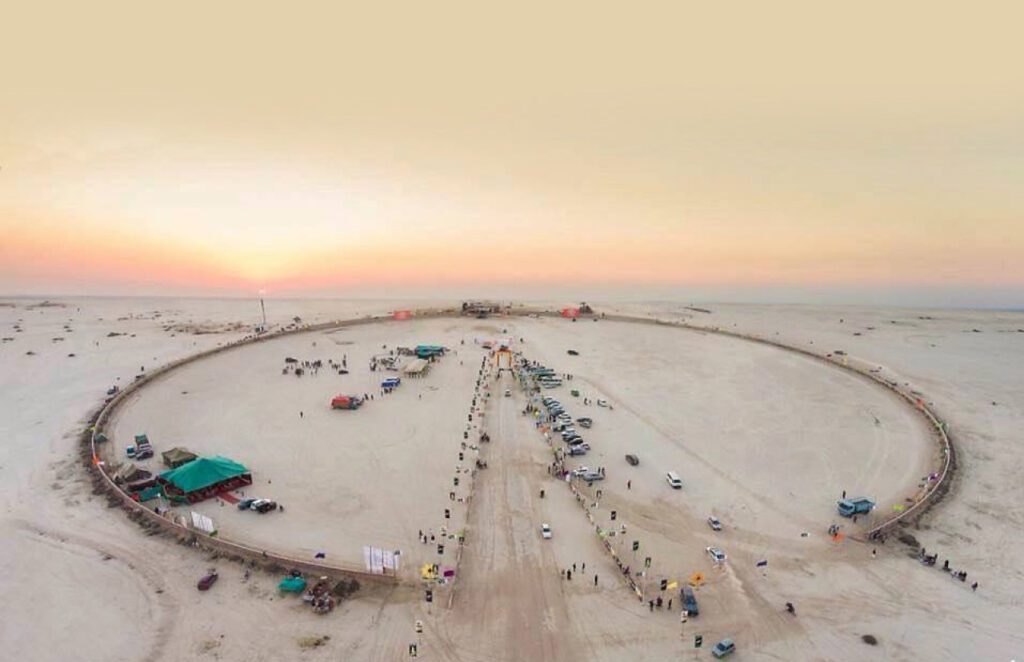
“I would suggest to all racing enthusiasts, Karting is the way to build up a base” the Racing Royal Nadir Magsi tipped. “I practiced a lot on Go-Karts in Florida. I think if you can do Karting, you can become a really good driver. All great drivers built themselves up from Karting”.
Sahibzada Sultan Ali, the surprise champion that has given King Magsi a run in his own kingdom, gave an interesting context to the rugged sport. Comparing it to tent-pegging, another internationally recognized Pakistani sport, Sultan Ali said that his first race was the only one that made him anxious “Dreading to forget any last minute checking before starting the race and most importantly making sure the car does not fail you before the finish line. Since I was already in tent-pegging before I joined this rally, the first race for me was the time when I felt a little confused and then the rest is history, all praise to Him”.
The top-wheeler shared with us that even though he always thought he had nerves under control, it was not until the introduction of smart watches that he realized his heart beat during the rally goes up as high as 166 per minute, indicating the strength of adrenaline that pumps through a racers’ heart at the start of the stretch.
The humble champion credits his rise and success in the Cholistan rally to none other than his greatest competitor, Nadir Magsi. “Despite being my competitor, Mr Magsi has not only taught me everything from scratch, but also helped me even during the rally in terms of assistance required in suspension. Our competition was always very close, still we practiced together”. This anecdote speaks volumes of the warm atmosphere of humility that hangs over the hot sands of the Cholistan.
Tushna Patel is one of the pioneers of the womens’ category in Pakistan’s desert rally scene. She has been a part of the rally ever since her husband introduced her to the unique thrill in 2005. A school teacher in her life before the desert engulfed her, Miss Patel says she hasn’t been able to go back ever since. Miss Tushna Patel took up the case of starting the women category of the rally, which is now one of the most popular extreme sports events participated in by female players and hailed around the world.
“This sport is not something I feel competitive about but is something very close and personal to me”, Miss Patel reminisced. “I have given it my attention for so long that even though internationally the players in this sport are hardcore opponents of each other, I on the other hand felt like I am part of a community that works and plays to lift each other up in the process of learning.”
She said that the sense of community within the drivers was a warm factor, one of the many that encouraged her to stay in the circuit. “Players are always there for each other for assistance, guidance and everything you may require to stay on the track”, she added while talking to ‘Second to None’.
“The type of families the players come from, I feel extremely safe and at home on the track”, Miss Patel said, reiterating that women with an interest in thrilling experiences should participate.
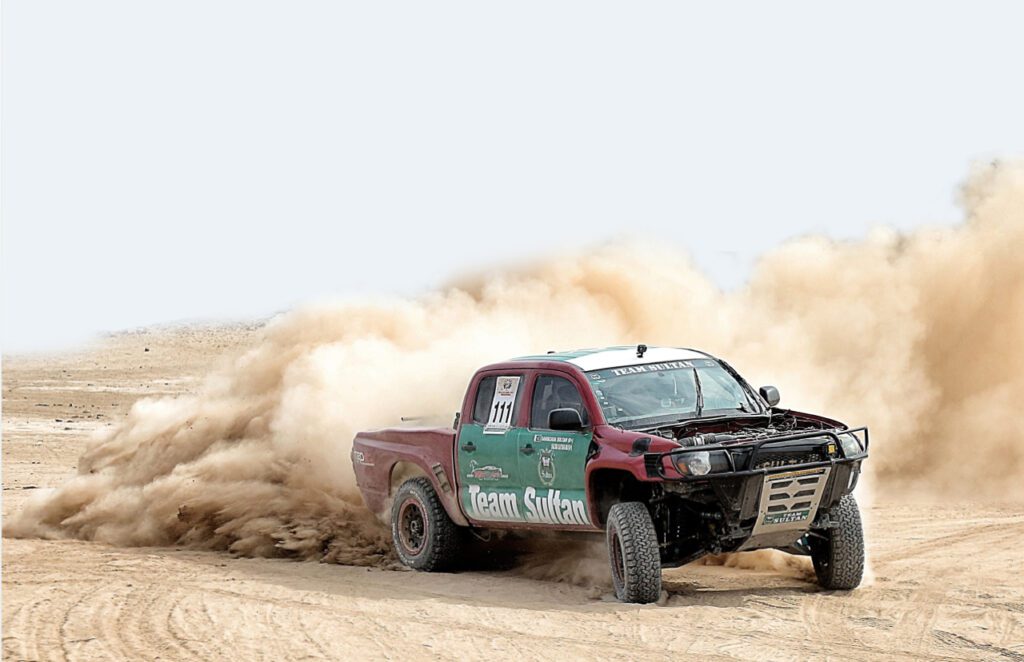
One such rising star player of the Desert rally is Maham Sheraz, daughter of rally veteran Sheraz Qureshi, the youngest female player the dirt track has ever seen. Miss Sheraz has given the game a new dimension, one that renders the dangerous sport an open-for-all arena. Speaking to Team Second To None, she said “I was lucky to be blessed with understanding colleagues. I could go for advice to any of them, especially my father who has been in this sport for years; Ms Tushna, Mr Roni Patel, Mr Nadir and many others were generous enough to mentor me”.
She said that the rally is a continuous learning and evolution process and that she’s learning by the day. “The sport teaches discipline. I’m highly motivated by the confidence my peers have shown in me. The sport projects a very positive image of Pakistan and I’m proud to be a part of it”.
Another brilliant craftsman of the track shed light on how the drivers manage to keep their engines alive in the brutal conditions of the desert. Mr Shabab Haider, who has been on and off the track since the 1980s, said that these rallies are a medium for the youth to push boundaries of self-awareness and to utilize their aggression, “This wouldn’t just boost their confidence but will also help them cater to their strength, mental endurance and teach them patience and discipline”, he added.
The veteran driver also shared one of the most important constituents of a victory lap: the Navigator. “Without a good navigator, one wrong turn can prove fatal, for the race and for life. “Chemistry is very important between the driver and the navigator. Both complement each other in terms of a strong unbeatable team. If there is any lag between the communications of both, there it spoils the entire concept of the pair sitting together in the car to compete.”
He explained the tunnel vision sensation when the race starts: the sensation of cancelling out everything else around and focusing on the steering wheel while scrambling to the finish line before anyone else.” It is an in-built love for extreme sports that gets you through the phobias of racing away at high speeds on tough terrains”.
The trick, as explained by the majority of the participants, is to make sure that the car does not topple at sharp turns even at the maximum throttle. Moreover, vigilance in checking the car before the race is also crucial. One out of place component, a hasty installation or a single loose screw can destroy the car and prove fatal for the team.
The way this sport has evolved says a lot about the talent that has come out but also the talent that still exists and needs to be polished to become part of the magnanimous community. The fact that the women’s category started just five to seven years ago, indicates the need of clubs in various parts of the country to motivate girls to be able to become a part of this sport and train well under the shadow of prominent women players. There is a need for this sport to be nationally acclaimed in terms of proper coverage and assistance for a larger audience to take part in viewing such an amazing two to three day rally.
